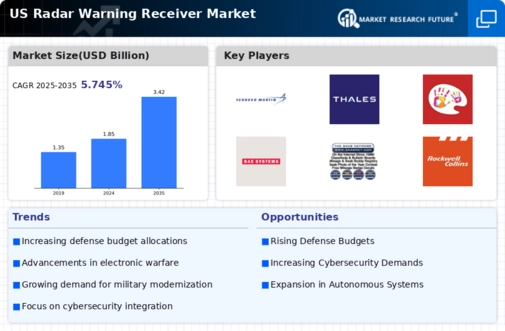The US Radar Warning Receiver Market is characterized by a competitive landscape shaped by advancements in technology, increasing demand for defense systems, and government initiatives focusing on national security. As military operations evolve, radar warning receivers play a crucial role in providing advanced situational awareness and threat detection capabilities to armed forces. The market comprises a mixture of established players and emerging manufacturers, each striving to enhance their offerings and capture market share.
Players in this market are involved in various strategies to gain a competitive edge, including research and development to innovate their product lines, forming strategic partnerships, and expanding their geographical footprint. Raytheon Technologies stands out in the US Radar Warning Receiver Market with a robust reputation for technological innovation and defense solutions. The company excels in developing advanced radar systems that provide operational advantages to military forces. Its commitment to research and development positions it favorably within the market, allowing Raytheon Technologies to continuously introduce cutting-edge technologies that enhance the performance of radar warning receivers.
The company's comprehensive portfolio also encompasses sophisticated electronic warfare systems, further solidifying its standing as a leader in the market. This forward-looking approach, coupled with established relationships with the US government and military, underscores Raytheon Technologies' strength in maintaining market dominance and responding to evolving defense needs.Lockheed Martin also plays a significant role in the US Radar Warning Receiver Market, leveraging its extensive capabilities in aerospace and defense. The company offers a range of key products and services integrating advanced radar warning capabilities designed to protect both manned and unmanned platforms.
Lockheed Martin's strength lies in its ability to deliver scalable and adaptable solutions that meet the specific needs of the US armed forces. The firm's strategic focus on innovation, paired with targeted acquisitions and partnerships, has enabled it to enhance its radar technology offerings and improve operational efficiencies. Furthermore, Lockheed Martin's successful navigation of mergers and acquisitions has contributed to its expansive market presence, allowing it to strengthen its technological base and deliver superior capabilities to its clients in the defense sector.
Through its extensive experience and well-established reputation, Lockheed Martin continues to be a vital contributor to the US Radar Warning Receiver Market.






















Leave a Comment